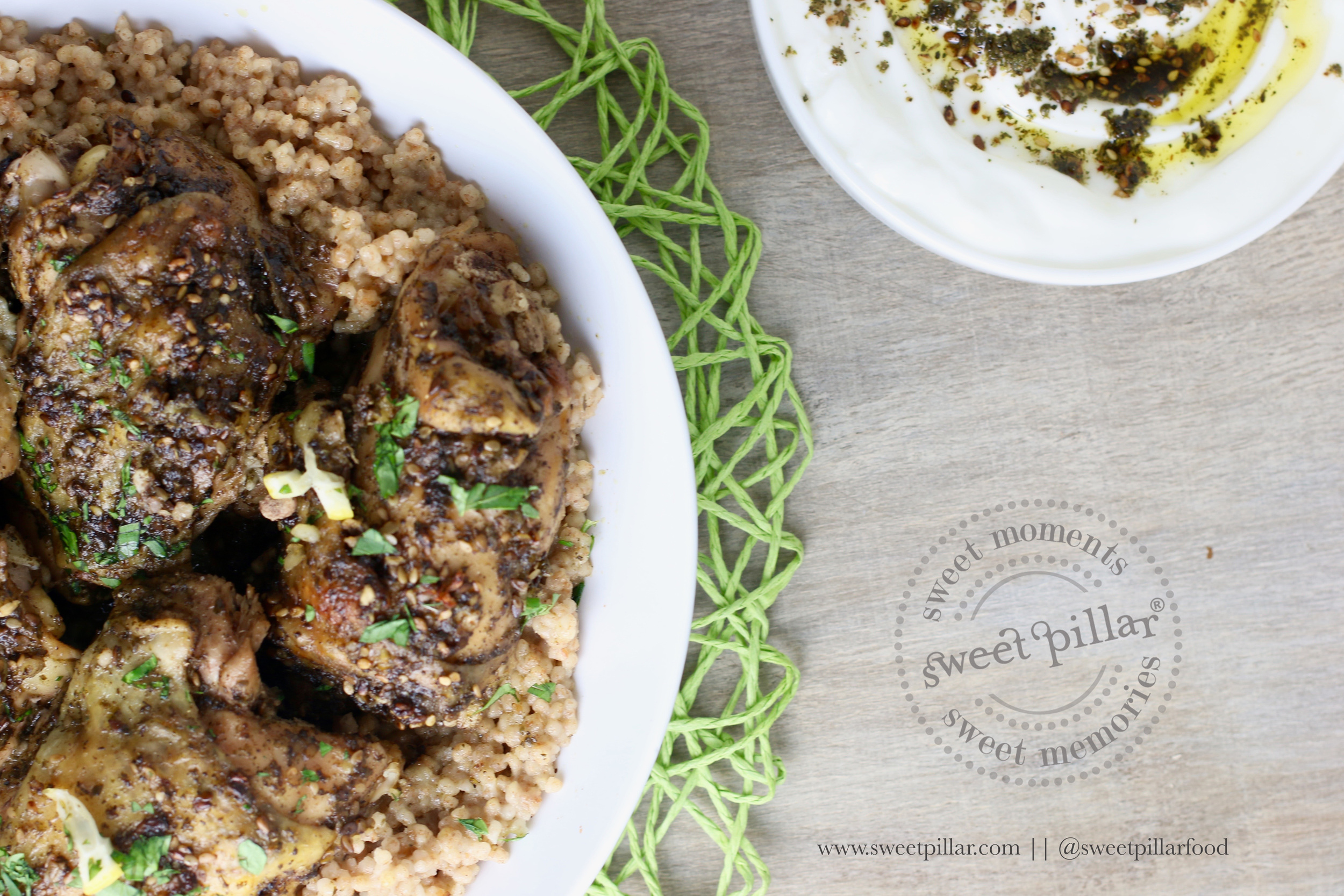First of all, let me clarify how it's pronounced. It's not zaatar like some sort of Zoro Spaniard sword fighter, it's actually pronounced za'tar. The apostrophe is a slight pause and a sound that is only found in the Arabic language. Its a sound released from the depth of your throat, almost like you're about to gag but you decide not to and then continue the rest of the word.
But you know what, zaatar, za'tar, tomato, tomatoe, potato, potatoes. Pronounce it as you please, I'm not judging.
Zaatar is one of those things that I grew up with and was as common to me as hummus and pizza were. At home we ate it one of two ways and that was either mezze style right next to olive oil or like an open faced pizza with olive oil called "mana -eesh". Olive oil and Zaatar go hand in hand like.... peanut butter jelly time.
So the way its done is as follows; there is always a slightly shallow bowl of zaatar and another slightly shallow bowl of olive oil. You take your fresh warm pita bread and dip it in olive oil, then quickly in the zaatar; the olive oil helps the zaatar stick to the bread and then you eat it. It doesn't end there. While the bite is still in your mouth you either crunch on a fresh cucumber or drink a sip of hot tea, or both. And thats how its done, as simple as that. Obviously the steps to do this become so second nature and it just becomes a dip, dip, crunch, sip and repeat situation.
That's how it's done in Damascus at least, next to your bowl of olives, your plate of lebne, hummus, eggs, jams, cheeses and whatever else you're having for breakfast. I specify Damascus because in even the close neighboring countries, (literally an hour drives away from Damscus is Beruit, Lebanon), zaatar is consumed in so many different ways. In fact the zaatar from Syria and Lebanon is slightly different then the zaatar from the Jordan and Palestine region and extremely different then anything I've seen in the US.
The zaatar that is not from the Middle East will never taste the same because it uses wild thyme specific to the Levant region (Syria, Lebanon, Palestine etc) Zaatar is prepared using this dried wild thyme, toasted sesame seeds, oregano, and sometimes sumac all ground up. In fact, the main difference between the Palestinian version and the Syrian/Lebanease version is the sumac berries and sometimes pomegranate molasses which gives it a shade of red versus the Palestinian/Jordanian version which is the commonly seen green zaatar. The Palestinian version is pretty famous throughout the entire region and everyone everywhere is always trying to find someone that is coming from there to bring a bag of authentic Palestinian za'tar.
I learned as I got older that some people don't only serve the olive oil and zaatar in separate shallow bowls but instead they just mix it together and you just dip once (gasp and super shock) I also learned that some people (my husband taught me this one) make a lebne sandwich with olive oil and zaatar in a pita bread wrap and call it lunch. Some people make an entire chicken dinner with zaatar and lemons. I mean the possibilities are endless. It has a slightly sweet but mainly tart taste which makes it so unique and full of flavor.
There is so much to say about zaatar, I could go on all day. Literally! For now, I'll leave it at this. ** If you follow me on snapchat (@nadiahubbi) I said I was going to make an announcement today BUT i'm actually not ready SO I'll save it for next week :):)
I wanted to take make a chicken dish using zaatar and I remember following a recipe years ago pre Pinterest days so of course I had no idea where to find it again. I perfected this recipe so its easy and the chicken is moist on the inside. I used bone in skin on chicken thighs but you can easily substitute chicken breast but just make sure its bone in otherwise it will be on the dry side.





